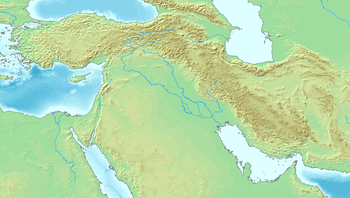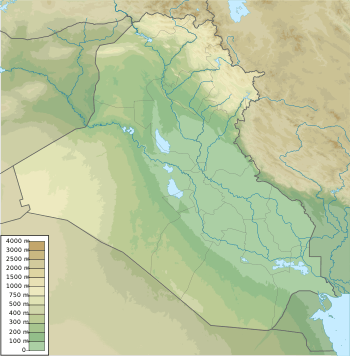Stele of Ushumgal
The Stele of Ushumgal is an early Sumerian stone tablet, dating to the Early Dynastic I-II (circa 2900-2700 BCE), and probably originating from Umma.[3][4] It is currently located in the Metropolitan Museum of Art, New York.[3][1]
| Stele of Ushumgal | |
|---|---|
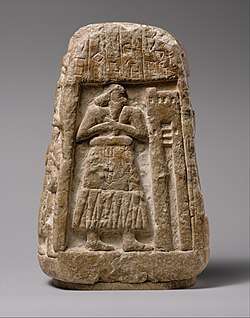 | |
| Material | Gypsum alabaster |
| Size | 22 cm high |
| Created | circa 2900-2700 BCE |
| Discovered | Possibly Umma 31.621369°N 45.933406°E |
| Present location | British Museum, London |
| Registration | Metropolitan Museum of Art 58.29 |
The stele is 22 cm high. It is partially deciphered, refers to an early transfer of land ownership. A large man is inscribed with a label, which can be read “Ušumgal, the pab-šeš priest of (the deity) Šara”. On the other side stands a female with an unclear name, probably the daughter of Ushumgal.[3][1]
The stele has been described as a type of "early Kudurru", a sort of stele known from the Kassites period in the 2nd millennium BCE.[5]
The name "Akka" appears in the Stele of Ushumgal, as Ak gal-ukkin, "Ak gal-ukkin official". It has been suggested this could refer to Aga of Kish himself.[6][7]
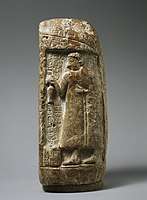 The daughter of Ushumgal.
The daughter of Ushumgal.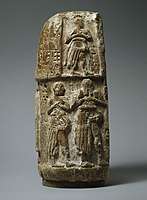 Three men, possibly from a local council
Three men, possibly from a local council The name "Akka" appears in the Stele of Ushumgal, as Ak gal-ukkin, "Ak gal-ukkin official". It has been suggested this could refer to King Aga of Kish himself.[6][8]
The name "Akka" appears in the Stele of Ushumgal, as Ak gal-ukkin, "Ak gal-ukkin official". It has been suggested this could refer to King Aga of Kish himself.[6][8]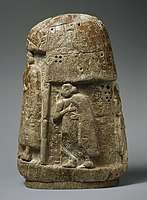 Another figure
Another figure
External links
References
- "Stele of Ushumgal". www.metmuseum.org.
- Art of the First Cities: The Third Millennium B.C. from the Mediterranean to the Indus. Metropolitan Museum of Art. 2003. p. 53. ISBN 978-1-58839-043-1.
- "Ushumgal Stele CDLI". cdli.ox.ac.uk.
- "Metropolitan Museum of Art". www.metmuseum.org.
- Beaulieu, Paul-Alain (2018). A History of Babylon, 2200 BC - AD 75. John Wiley & Sons. p. 35. ISBN 978-1-4051-8898-2.
- Frayne, Douglas. The Struggle for Hegemony in "Early Dynastic II" Sumer. pp. 65–66.
- "CDLI-Found Texts". cdli.ucla.edu.
- "CDLI-Found Texts". cdli.ucla.edu.

